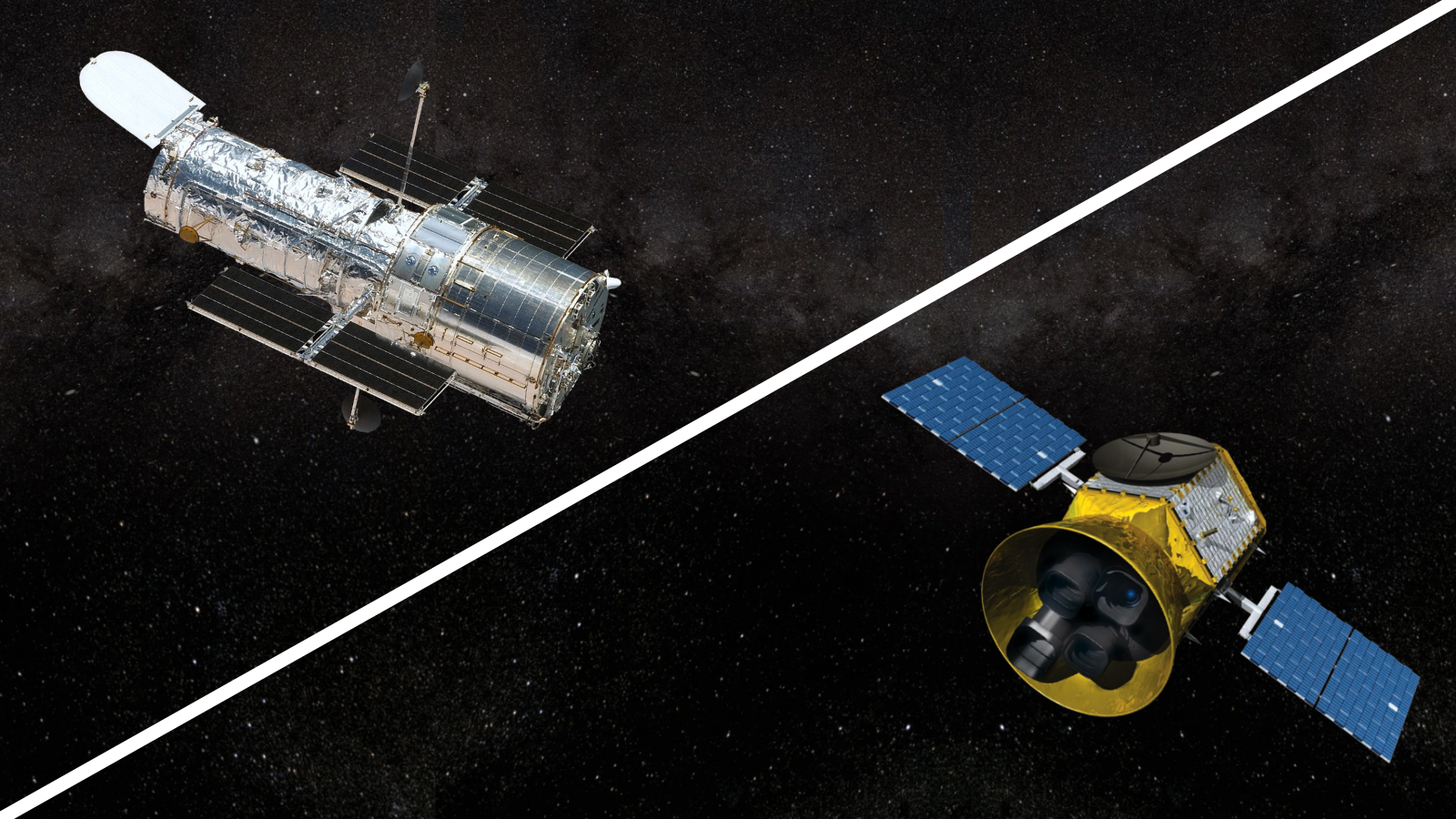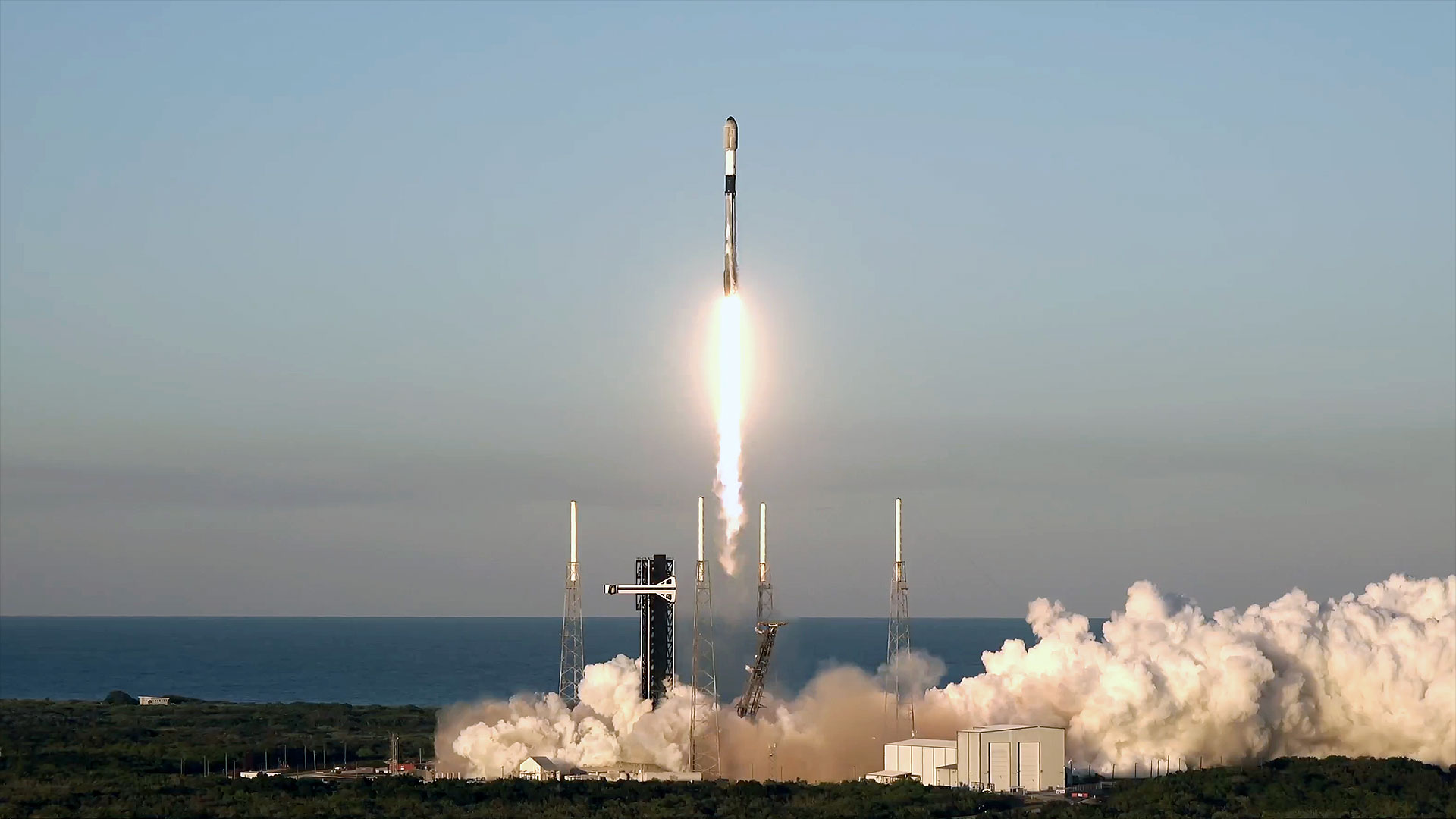NASA's Hubble Telescope is back in action — but its TESS exoplanet hunter may now be in trouble
Both space telescopes went down on April 23 — but, while Hubble is back, TESS remains in safe mode.

On Monday (April 29), NASA restored the Hubble Space Telescope to full operation, returning it to its scientific activities after the spacecraft spent a week in safe mode. The celebratory mood was dampened somewhat, however, because NASA's exoplanet hunter, the Transiting Exoplanet Survey Satellite (TESS), remains in limbo.
Ironically, TESS also stopped collecting science data on April 23, the same day the Hubble Telescope was placed into safe mode. The latter's operations were halted due to a glitch with one of its three gyroscopes, which the space telescope uses to determine how it is orientated, while the reason for the former's lapse in service is still unclear.
NASA engineers had been preparing to operate Hubble, which launched in 1990 and has been surveying the cosmos for 34 years, with just one gyroscope. A NASA update on Tuesday (April 30) revealed that the issue had been resolved, and Hubble was back to operating with three gyros. In the statement, NASA said that all of Hubble’s instruments are online, and the telescope has resumed taking scientific observations.
Related: Hubble Space Telescope pauses science due to gyroscope issue
This particular gyro has caused Hubble trouble in the past, sending faulty readings back to Earth and necessitating a shutdown in November 2023. The three gyros are the last functioning from a batch of six fitted to Hubble in 2009 during the fifth and final space shuttle servicing mission.
On the other hand, NASA has said the TESS shutdown is still a bit mysterious. The agency announced that the TESS team is currently investigating the underlying cause of the shutdown while working on a way to restore TESS to full operating status.
Furthermore, NASA is also continuing to investigate the cause of a separate safe mode event that shut down the exoplanet hunter earlier last month. TESS went offline on April 8, but resumed operations after that glitch on April 17 — before dropping into safe mode yet again six days later. The space agency says that the aim of the investigation is to discover if these two events are linked.
Breaking space news, the latest updates on rocket launches, skywatching events and more!
TESS completed its primary mission in July 2020 and finished its first extended mission in September 2022. The exoplanet hunter is currently in its second extended mission period; on April 30, NASA put out a call for input on science cases that should be prioritized in TESS's third and fourth extended mission periods.
Both the Hubble and TESS space telescopes recently marked anniversaries.
On April 18, 2024, TESS marked six years since it was blasted into space atop a SpaceX Falcon 9 rocket from Cape Canaveral. On April 24, 2024, Hubble had spent 34 years in space. The space telescope launched from Kennedy Space Center in 1990 as part of the Space Shuttle Discovery's STS-31 mission.

Robert Lea is a science journalist in the U.K. whose articles have been published in Physics World, New Scientist, Astronomy Magazine, All About Space, Newsweek and ZME Science. He also writes about science communication for Elsevier and the European Journal of Physics. Rob holds a bachelor of science degree in physics and astronomy from the U.K.’s Open University. Follow him on Twitter @sciencef1rst.
